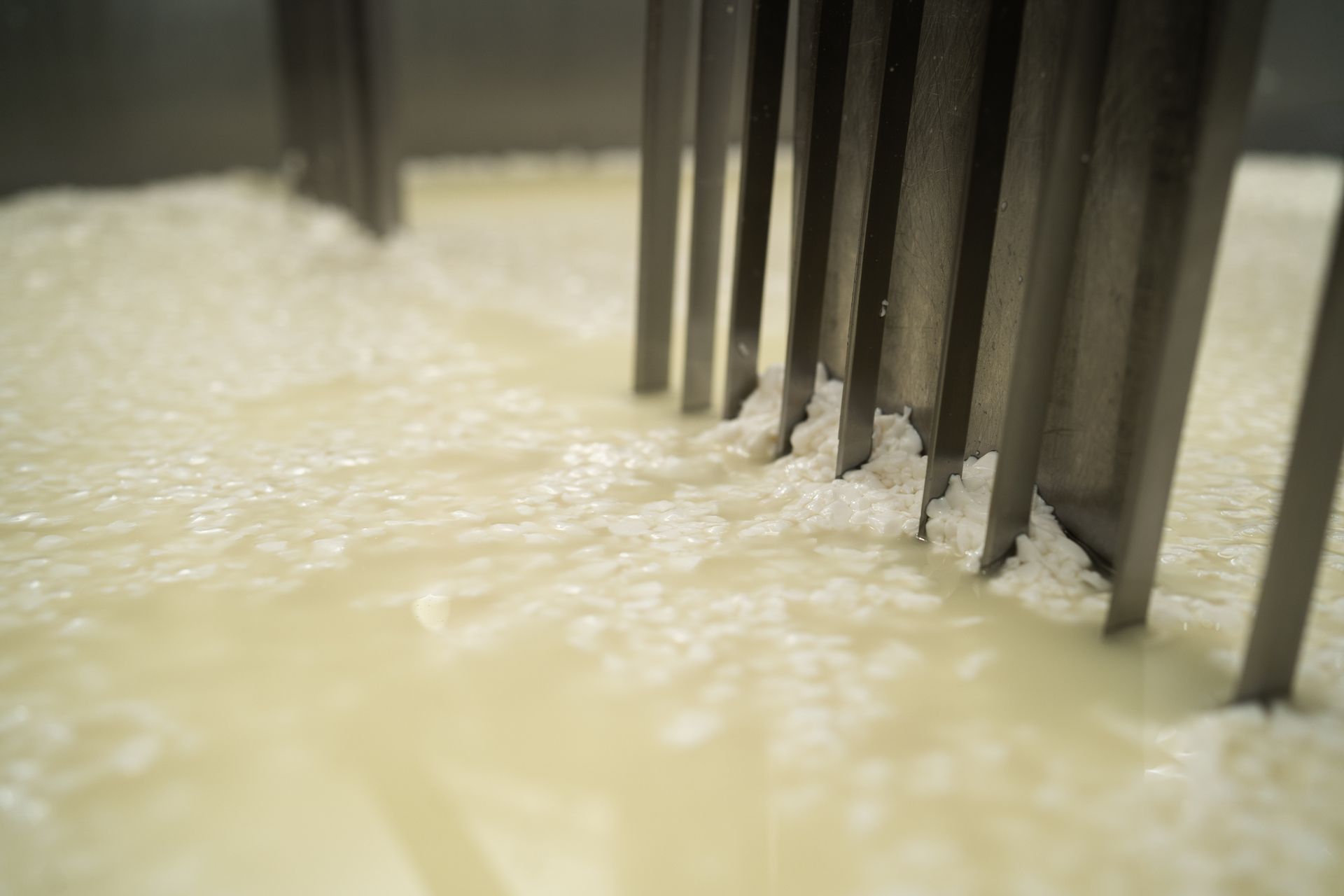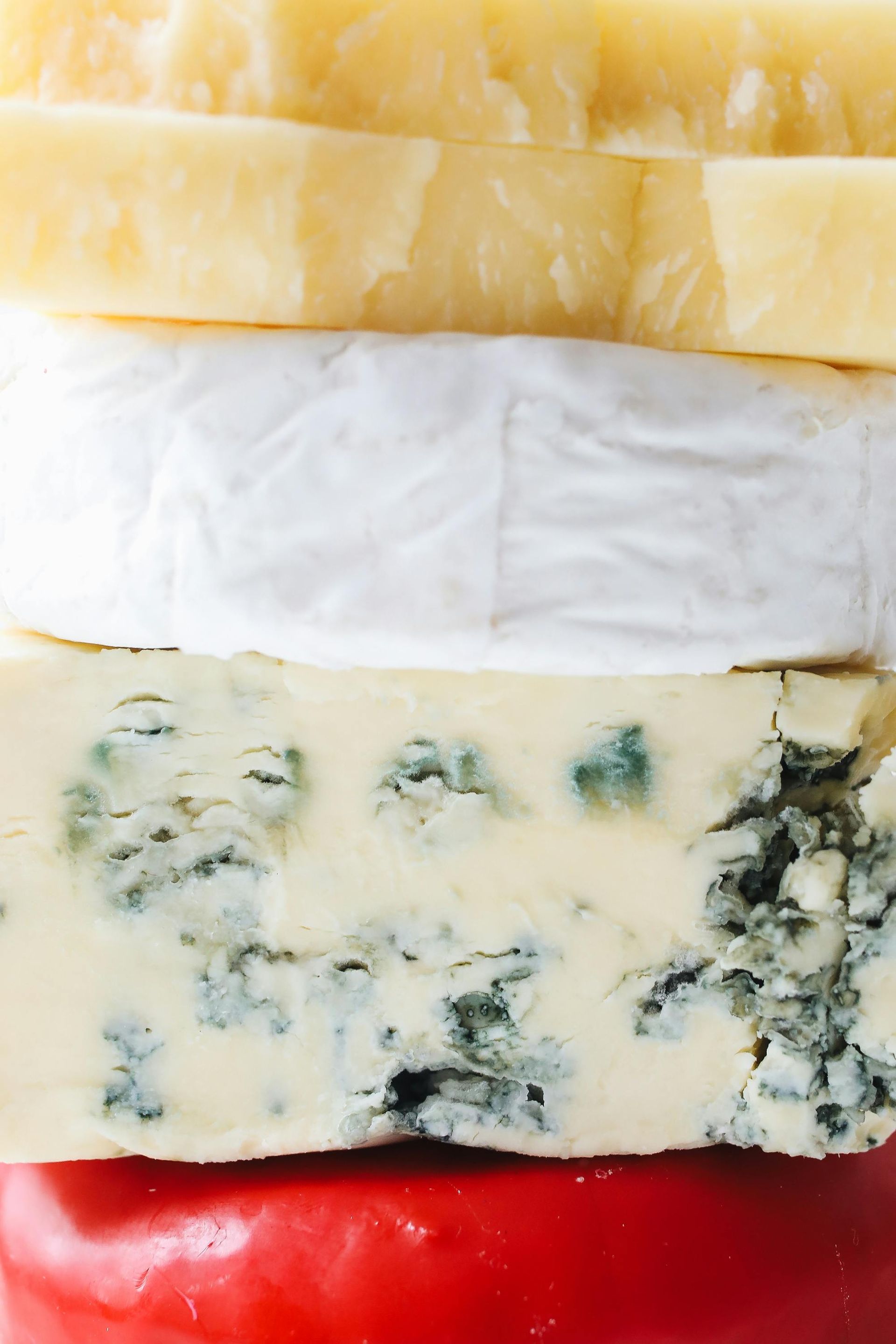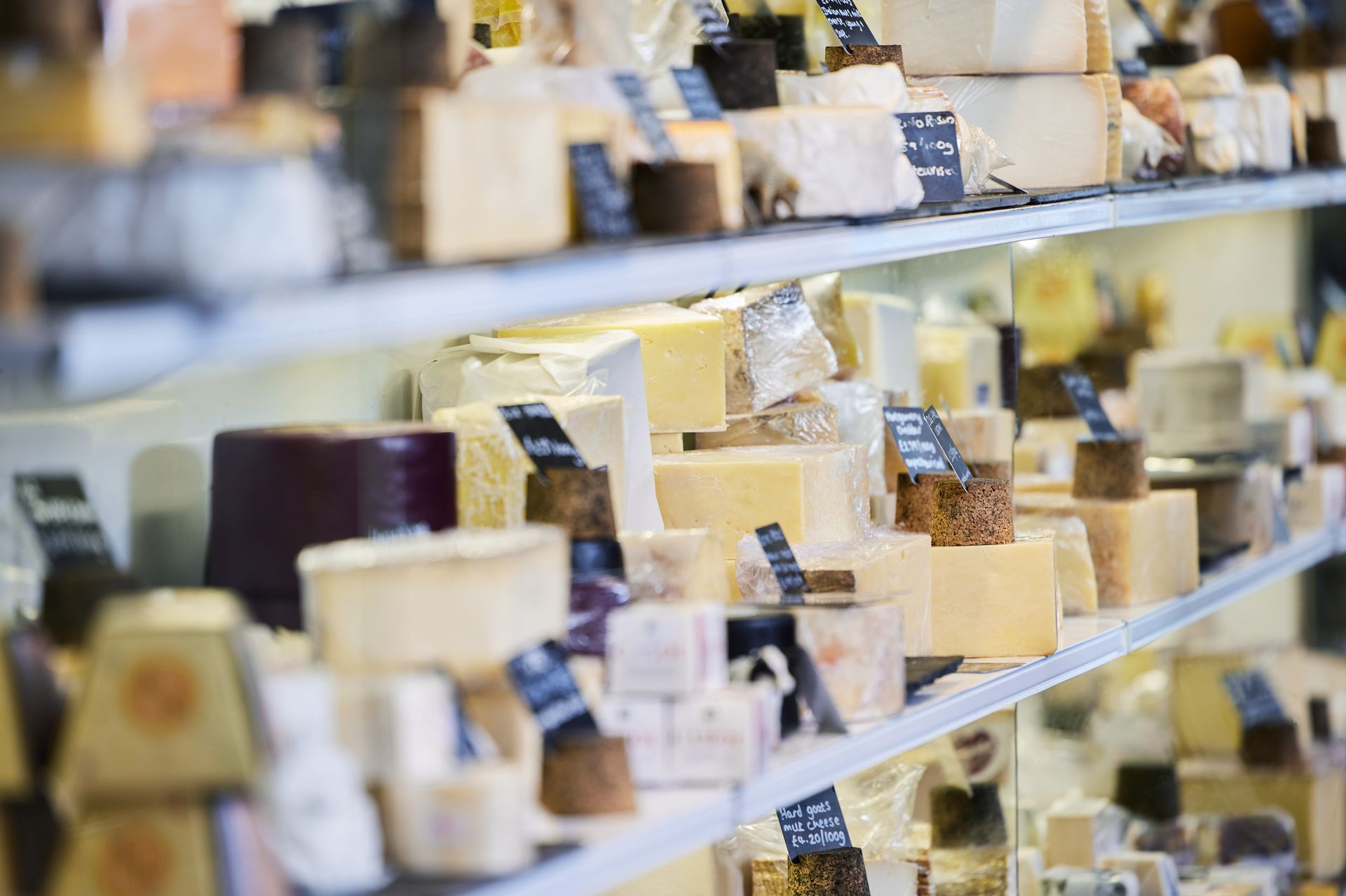QUARTER 4 CHEESE REPORT 2025
From Heritage to Horizon:
The UK Cheese Market 2026–2033
A Market at a Crossroads
Cheese holds a singular place in the British diet. From farmhouse Stilton and Red Leicester to the block of Cheddar on the weekly shop, it is at once tradition and staple. It is comfort food, cultural heritage and now, increasingly, a vehicle for innovation.
The past five years have tested the market - inflationary pressure, supply chain disruption, competing alt-dairy narratives - but cheese has held its ground. The UK market stood at just over USD 3 billion in 2024 and is forecast to reach USD 4.8 billion by 2033 - a steady 5% CAGR.
Yet the shape of that growth is changing. The centre is collapsing. The mid-tier — once home to quietly reliable brands — is thinning out. Growth is no longer evenly distributed. Consumers are at once more price-sensitive and more demanding. They buy value at the bottom, and purposeful differentiation at the top. Anything that occupies the comfortable middle now risks invisibility.
This is where the International Cheese & Dairy Awards (ICDA) come in. The Awards increasingly act as a mirror for the market: signalling which cheeses define value, which deliver innovation, and which protect heritage.
ICDA is not simply celebrating excellence anymore - it is signalling relevance, direction and competitive truth.
Steve Moncrieff, Strategy Director, ICDA
Market Forces: Value, Provenance and Proof
The forces shaping 2026 are clear.
Premiumisation is purposeful. Consumers will still pay more, but only when a cheese comes with a story. Provenance, PDO status, organic sourcing - these are no longer embellishments but purchase drivers. Retailers are now working with British artisan dairies, to curate provenance ranges precisely because shoppers seek clarity. Entries to ICDA in recent years echo this: categories dedicated to territorials and farmhouse cheeses are seeing strong, steady participation, reflecting a market eager to reward authenticity.
Functionality is expanding. Lactose-free, high-protein and reduced-salt cheeses are no longer niche. They now occupy a clear “better-for-you” tier, providing health benefits without flavour compromise. ICDA’s innovation classes have seen a rise in such entries, aligning with investment from major producers.
Foodservice remains crucial. Mozzarella, burger cheese and cream cheese continue to underpin menus. What has shifted is how functionality is marketed: “meltability”, “stretch” and “yield” are now the selling points. In 2026 the foodservice categories at ICDA will be elevated and given more prominence, underlining their growing strategic importance.
Sustainability is becoming commercial. Generic green claims no longer satisfy. Carbon footprint per kilo, regenerative farming credentials and recyclable packaging are increasingly decisive for listings. Judges at ICDA are seeing sustainability referenced in entry materials more often - proof that what once was reputational has become competitive.
Dairy-Free and Hybrid: From Boom to Balance
Plant-based is not collapsing. It is normalising. Once billed as disruptors, its lost some momentum. Concerns over taste, price and “ultra-processing” have cooled growth. Nearly a quarter of consumers now view traditional dairy as healthier.
But this is not the end of the story. Over half of lapsed buyers say they would return if products improved on taste, value and nutrition. Almost all light users are open to trying new plant-based drinks.
Foodservice remains the proving ground. Coffee chains normalising oat milk and pizza operators experimenting with vegan cheese blends have kept the category visible. These out-of-home trials matter - habits formed in cafés and QSRs migrate into households.
Hybrid dairy is one of the most interesting strategic spaces, blending animal and plant inputs for protein, performance and sustainability gains. Precision fermentation - while still early - is moving steadily from lab concept to capital-backed pre-commercial reality.
For 2026, the most realistic outlook is pluralism. Dairy dominates, lactose-free drives growth, plant-based remains a repertoire choice, and precision fermentation is one to watch.
This is why ICDA is expanding its remit. Alternative and Hybrid categories are judged not simply on novelty, but on taste, nutrition, value and transparency - criteria that reflect what the market really needs. Awards here are not just trophies; they are benchmarks for retail and foodservice buyers.
Sharpening the Ladder
The defining trend is the disappearance of the middle ground. Producers and retailers are structuring portfolios around clear good-better-best ladders:
- Good - value-driven staples: supermarket Cheddar blocks, foodservice mozzarella, volume-efficient cheddar streams
- Better - functional performance: high-protein, lactose-free, reduced-salt, nutritionally enhanced formats
- Best - provenance-led, artisan, regional, PDO-anchored, craft with narrative credibility
The ICDA Awards now consciously track this reality. Value Excellence categories celebrate quality in staples, Functional Innovation recognises reformulation and health, while Heritage & Provenance trophies honour craftsmanship. By doing so, ICDA doesn’t just follow the market - it shapes how buyers and consumers understand it.
Innovation and Marketing: Agility and Evidence
Innovation cycles have shortened sharply. Seasonal and limited-edition launches, chef collaborations, pre-scaled retail tests - brands are learning faster, with lower risk. ICDA entries now include festive Stiltons, peppered territorial specials and fortified cheddar prototypes - evidence of test-market agility.
Marketing itself has become more forensic. Retail media networks are now performance-measured, incrementality-indexed and non-negotiable. Winning attention now requires empirical credibility - not only emotional appeal. ICDA’s new visibility tools for winners plug directly into this new buyer logic.
Sustainability is no longer treated as “virtue signalling” - it is commercial hygiene. Packaging recyclability, carbon intensity per kilogram, farm practice scoring - these are now procurement filters, not brand flourishes.
Risks and Realities
Headline inflation is easing - but cost pressure on labour, packaging, energy, compliance and logistics remains stubborn. Imports from Ireland, France and New Zealand continue to compete aggressively. Climate volatility is now a material factor for milk supply assurance. Regulation - from salt to packaging to marketing claims - is hardening, not loosening.
Growth will continue, but unevenly. Artisan and territorial cheeses will command premium positioning. Functional and lactose-free will scale fastest. Mozzarella will drive volume through foodservice. Dairy-free will stabilise, not retract. Precision fermentation will quietly grow below the horizon line.
And through it — ICDA will matter more, not less.
ICDA is evolving from awards platform to strategic signal — helping retailers, chefs and investors see where the market is truly heading, not where it has already been.
Steve Moncrieff, Strategy Director, ICDA
Looking Ahead: Heritage and Horizon
By 2033, the UK cheese and dairy market will be bigger, more polarised and more sophisticated. Success will rest on clarity: knowing where a product sits on the ladder, proving its value, and telling its story with integrity.
The International Cheese & Dairy Awards will be central to that journey. Not only as a celebration of the best cheeses and dairy products, but as a compass for the sector - guiding buyers, informing retailers and rewarding producers who set the benchmark.
In a market that demands value and authenticity, heritage and innovation, dairy and dairy-free, ICDA’s unique ability to showcase the full spectrum will remain its defining contribution.



